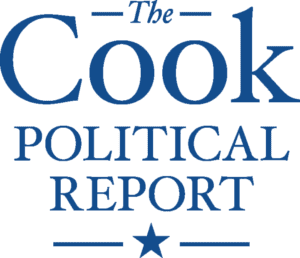News
Catalist data and analysis has been cited by:






Recent Catalist Coverage
What Can Ballot Initiatives Defending Abortion Rights Tell Us About Public Opinion on Abortion?
Jonathan Robinson | July 11, 2022
"Ballot initiative results have often surprised political observers, especially when public opinion polling seems strongly in their favor ahead of a vote. While a policy might poll extremely well in a jurisdiction, how voters ultimately cast their ballots is another matter.
In research with Chris Warshaw of George Washington University and John Sides of Vanderbilt University, we find that polls tend to overestimate support for ballot initiatives on issues where opinion is lopsided, regardless of whether opinion tilts in the conservative or liberal direction."
If your party is going to lose, you can at least have a say in how it loses.
"Pundits and voters of all stripes lament just how extreme, polarized, and ideological American politics has become. But such grievances rarely come with advice for how ordinary people can address this problem, other than by voting for their preferred political party’s candidates in general elections. Even that advice isn’t very helpful: Voters in many parts of the country do not have the chance to participate in close electoral contests."
The GOP is gaining among Texas Hispanics. Women are leading the charge.
In places where Donald Trump made some of his biggest inroads with Hispanic voters, women are playing a key role in the Republican Party’s growth.
Sabrina Rodriguez | February 7, 2022
Democrats are losing the culture wars
Ronald Brownstein | December 9, 2021
Who Will Show Up To Vote Next Year?
Amy Walter | October 29, 2021
New report details how Biden won 2 key states — and what Dems can learn from it
Scott Bland and Elena Schneider | October 27, 2021
Megan Messerly | October 27, 2021
Schooling Alongside Minorities Reduces White Students’ Tendency to Vote Republican
Carla Fried | September 22, 2021
Center for Security in Politics Announces New Working Group to Study Digital Remote Voting
New group will consist of experienced cybersecurity and election security experts, election administrators and engineers to explore new voting methods that expand the ease and accessibility of voting
September 8, 2021
How Democrats Won the 2020 Election
August 6, 2021
"Every election cycle, dozens, if not hundreds, of post-election analyses are published to explain the results. Today, our Data Dive focuses on one analysis of the 2020 election: Progressive data firm Catalist’s “What Happened in 2020” study, which makes sense of a national database of voter turnout information and highlights key trends that could guide Democrats to victory in the future."
What Happened in 2020™ Coverage
Democrats can’t afford to take Latino voters for granted.
“Is this bad news or is this good news for the Democratic Party? The reality is that’s not knowable right now,” Michael Frias, CEO of the election data analysis firm Catalist, said. “What we know is this is a fast-growing part of the electorate, and there’s opportunity here. The race is really who’s going to invest the time, energy and attention to learn more about these voters, engage more of these voters, and really listen to them.”
“Stop taking broad communities for granted. It has to be earned,” Frias said. “And it’s hard work to keep up communication and engagement with voters year-in, year-out, outside of election cycles and in election cycles. But there is enough money in politics to be able to have those conversations continuously.”
The 2020 Election Was a Breakthrough Moment For Young Voters
Charlotte Alter | May 18, 2021
"For starters, there are simply more of them. According to new data from the Democratic data firm Catalist, Millennials and members of Gen Z—which together make up the American adults born since 1981— now represent 31% of the electorate, up from 23% in 2016 and just 14% in 2008. Meanwhile, the voting blocs that have long maintained an iron grip on American political power are receding. In 2008, Baby Boomers and older generations (American adults born before 1964) made up 61% of the electorate; by 2020, they were only 44%."
“That’s a permanent change,” says Yair Ghitza, chief scientist at Catalist. “And it’s only going to grow from there.”
A new analysis uncovers the demographic shifts that led to Joe Biden’s victory
Suburban whites moved left; young and non-white voters showed up
May 14, 2021
"A new analysis by Catalist, a firm that examines political data, reveals many different angles to Mr Biden’s victory."
Philip Bump | May 10, 2021
"The data firm Catalist explored the 2020 electorate in a lengthy report published Monday. It breaks out the voter pool along several demographic lines, including race and education. In particular, the analysis splits up the White electorate into those with and without a college degree, a divide that emerged as essential in 2016 and 2018."
Massive turnout, voters of color — new data fill in the details on Biden’s election win
David Lauter | May 10, 2021
"Those voters, many of whom live in suburban areas, swung sharply against Trump in the 2018 midterm election and stuck with Biden in 2020, said Yair Ghitza, Catalist’s chief scientist."
“In the Trump era, white college voters have become an increasingly core piece of the Democratic coalition,” Ghitza said. A big question for the next couple of elections is, “will that continue?”
A new report complicates simplistic narratives about race and the 2020 election
The report from the firm Catalist looks at what changed since 2016, but also at the parties’ coalitions overall.
"In the days and weeks after presidential election results come in, commentators attempting to figure out what happened with voter demographics are often in a fog — forced to rely on unreliable exit polls. More rigorous analysis simply takes longer."
"Now, Catalist, a Democratic data firm, has put out a report on “What Happened in 2020,” authored by Yair Ghitza and Jonathan Robinson, which makes a serious attempt to answer that question. The report is superior to the exit polls because it’s based in their research for what’s known as a “voter file.” Basically, they’ve put together a large database of turnout information about actual voters, assembled from state or local records about who actually showed up."
Younger voters propelled Biden to victory over Trump in 2020, new study finds
Alex Roarty | May 10, 2021
“In short, 2020 accelerated a massive change in the composition of the electorate, with Millennials and Gen Z taking an increasingly prominent role in the future of American elections – a demographic change that is functionally permanent,” wrote Yair Ghitza and Jonathan Robinson, the co-authors of the Catalist study.
Young, diverse voters fueled Biden victory over Trump
Reid Wilson | May 10, 2021
"The data firm Catalist explored the 2020 electorate in a lengthy report published Monday. It breaks out the voter pool along several demographic lines, including race and education. In particular, the analysis splits up the White electorate into those with and without a college degree, a divide that emerged as essential in 2016 and 2018."
















